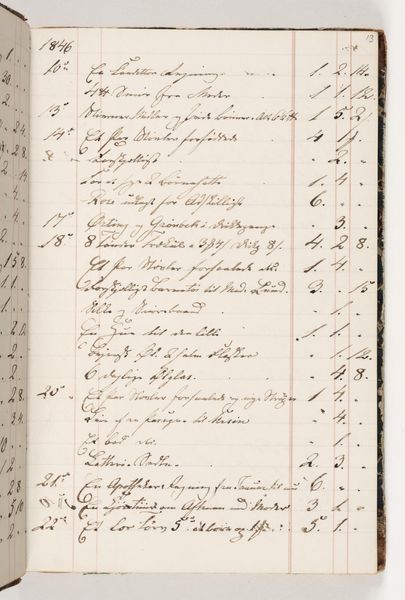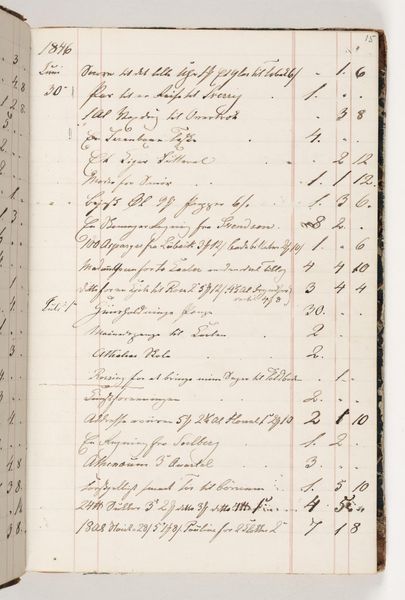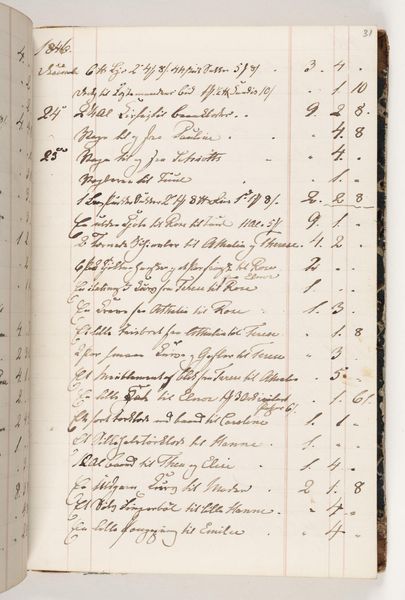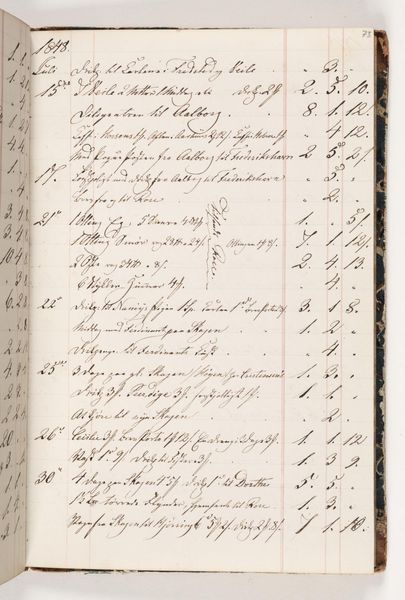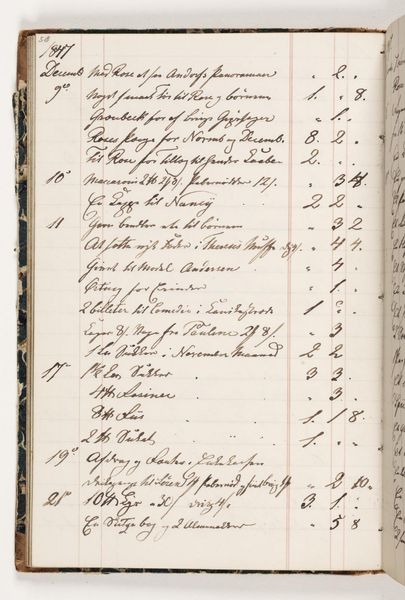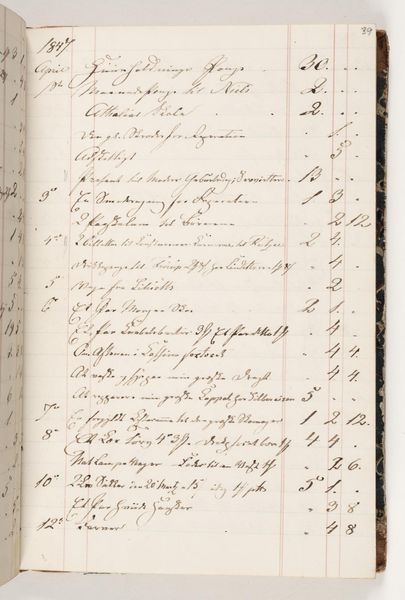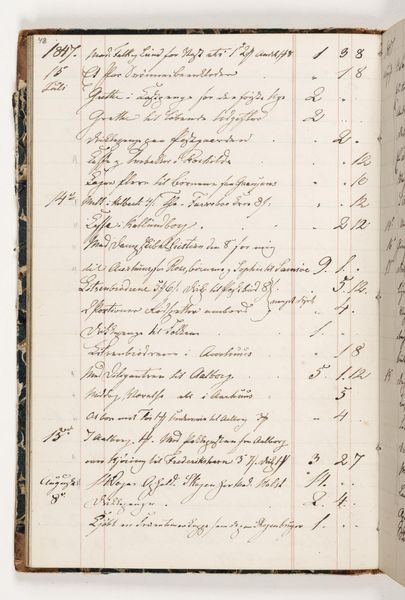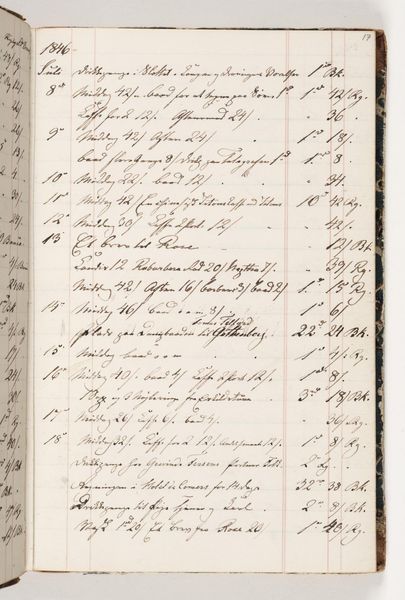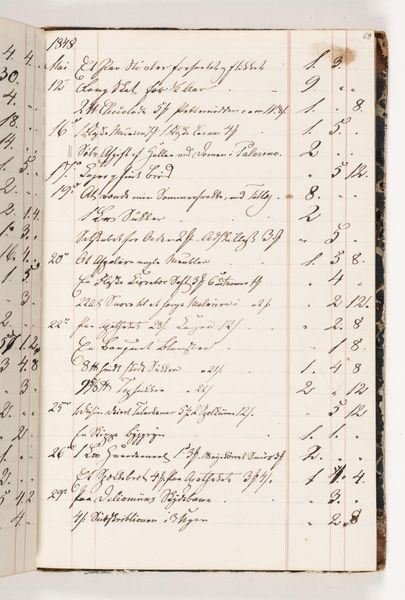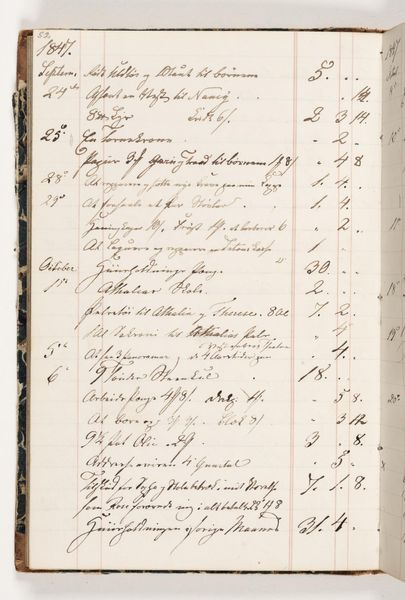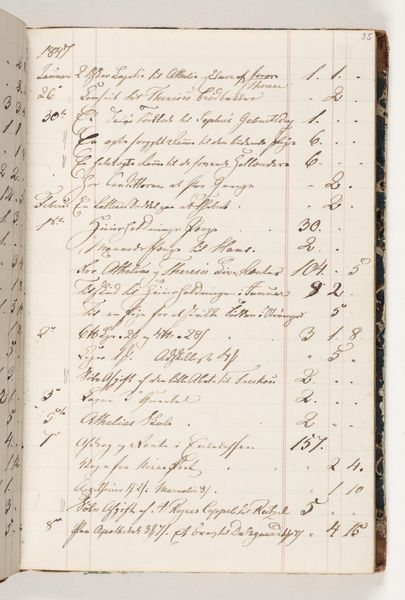
drawing, paper, ink
#
drawing
#
paper
#
ink
#
genre-painting
#
watercolor
Dimensions: 200 mm (height) x 130 mm (width) (bladmaal)
Curator: Here we have Martinus Rørbye's "Regnskab 1848," a drawing made with ink on paper, residing at the Statens Museum for Kunst. It's literally a page from an account book dated 1848. Editor: My first thought is simply the beautiful textures created through ink on paper. The evenness of the writing creates such a wonderful look and shape overall, with areas of darker saturation contrasting the untouched cream. I find it all very grounding. Curator: Indeed! The drawing isn't about illusion, but rather it foregrounds its material reality, bringing a tangible record of a lived world to the present. The regular lines of script point to a certain form of societal structure based around the act of financial accounting. It speaks to 19th-century life via the work practices of the day. Editor: But I see an intriguing interplay between intention and accident. There's the regimented grid, the consistent penmanship, all overlaid with time's own mark - the paper's browning, ink blotches. The page shows signs of daily life. Curator: Exactly! What does the everyday *consist* of? Lists of commodities! Accounts of material exchange! In many ways, this piece undermines the division of "art" and "non-art," of so-called higher creative forms. What constitutes Rørbye's daily grind, literally put to page for us, seems much more aligned with commodity production and its accounting more than something sublime and transcendental. It challenges those established, exclusive boundaries. Editor: True, yet consider how Rørbye framed it—carefully selecting and rendering it through distinct tonal qualities in line and shape, which imbue the overall work with a rhythm which one might expect to find in an instrumental composition. Even in accounting there exists great value. The way he isolates this page turns mundane writing into a complex object to behold. Curator: It's interesting that you use those terms to evaluate this accounting statement, perhaps suggesting that there remains an inescapable bias embedded within artistic creation, even when deployed on something which on its surface seems quite mundane and devoid of transcendence. Editor: Absolutely. The piece reminds me to notice details—to perceive beauty within the quotidian documents that we interact with everyday. Curator: And for me, it speaks volumes about the social fabric within which even the most individual work and creativity transpires.
Comments
No comments
Be the first to comment and join the conversation on the ultimate creative platform.
